Overview: Learning how to center yourself is perhaps the most important skill most people never learn. This guide explains what the Center means and offers effective methods for finding it.
______________
Do you start the day in a calm or reactive state?
Do you end the day feeling nourished or depleted?
How about during the day: Are you primarily focused or scattered?
Your answers to all these questions relate to the Center.
It’s an idea that may sound mystical or esoteric at first, but it’s real. And you can experience it directly in the present moment.
What is the Center?
The Center is a concept originating from ancient Eastern traditions, particularly the Complete Reality School of Taoism.
There are various ways to interpret the Center, including the physical, emotional, mental, and spiritual aspects.
However, from the perspective of Eastern philosophy, the Center is said not to have any location.
Instead, it represents a quality of consciousness associated with neutrality, calmness, steadiness, and alertness.
What is Centering?
Centering is the process of accessing an internal state of consciousness that is neutral, calm, steady, alert, active, and present.
Many exercises, practices, and methods support centering.
Any exercise or method that brings you to a state of “at-homeness” within yourself can be considered a centering practice.
What the Center Feels Like
As Joseph Campbell said in The Power of Myth:1Joseph Campbell, The Power of Myth, 1991.
There’s a center of quietness within, which has to be known and held. If you lose that center, you are in tension and begin to fall apart.
The Center doesn’t have a physical location, yet it is associated with specific body regions. It’s more of a dynamic point of psychic equilibrium or inner balance.
When you’re in the Center, there’s no internal resistance. Everything simply is.
You are alive, alert, and active. An inner calm prevails.
Abiding in the present moment, you act spontaneously. You don’t try to achieve this present awareness; it’s a result of being in the Center.
Happiness and sadness are not experienced in the Center. You don’t feel “positive” or “negative.”
In the Center, you are neutral.
Centering is also a Skill
We’ve all experienced this Center before, if only for brief moments. (It’s often more commonplace in very young children.)
Anyone can learn to abide in the Center more frequently.
You can train yourself to notice when you’re out of the Center.
Then, with the right method, you can reclaim the Center repeatedly.
With practice, you’re able to center yourself with greater frequency.
Now, let’s look at signs that you’re off-center.
Clear Indicators You’re Out of Center
Throughout the day, you …
- Take on too many tasks, and you multitask
- Are reactive, checking your phone compulsively
- Fail to differentiate what is urgent from what’s important
- Feel fatigued early in the day
In your mental and emotional state, you …
- Are consumed by negative self-talk
- Are easily distracted and unable to focus
- Ruminate about the past or hold anxiety about the future
- Get stuck, high-strung, or overwhelmed
In the evening, you …
- End your day feeling depleted
- Struggle with impulse control with sugar, social media, alcohol, snacks, TV, marijuana, drugs, shopping, etc
- Can’t remember what you did yesterday or even today
- Go to sleep too late or crash too early
Are any of these signs familiar to you?
Most People Live Out of the Center
Most of us are out of the Center all the time.
Our search for happiness is a consequence of being out of the Center.
We strive for success or to “build self-confidence” largely because our Center eludes us.
Other symptoms of being off-center include addictive behaviors, being overwhelmed, laziness, procrastination, a fixed mindset, and self-criticism.
When we’re outside the Center, we either lack trust in ourselves or are overly confident in our mind’s perception.
Gurus, thought leaders, talking heads, “officials,” and institutions become our authority.
The truth is, when we’re out of the Center, we can’t trust ourselves because we’re disconnected from our instincts and our true feelings.
The Costs of Living Out of the Center
We experience all inner fulfillment from the Center.
When we don’t abide there, we feel impoverished. This forces us to look to the future or ruminate in the past.
We believe the answer lies in something external: a better job, the “right” relationship, more money, prestige, and so on.
Certainly, these things will satisfy my needs, we believe.
Perhaps the most significant sign of our collective condition is the prevalence of mental disorders.
Anxiety disorders affect 18 percent of adults ages 18 to 54 in the United States.2https://www.nimh.nih.gov/health/statistics/any-anxiety-disorder
However, that percentage only accounts for what the industry classifies as “disorders.” Virtually everyone experiences anxiety at various levels under certain conditions.
When we’re out of the Center, fear, anger, rigidity, or numbness rules us.
Returning to the Center: Two Ingredients
Thankfully, it’s easy to return to the Center, if only temporarily.
It takes two primary ingredients:
- Awareness: the ability to detect when you’re out of the Center at the moment.
- Method: an effective practice for centering yourself.
I stress it’s easy to center yourself because if you think it’s difficult, it will be.
If you believe, as I once did, that it takes years of mind training to center yourself, it will take years.
Before we dive into a range of centering practices, it’s helpful to have a conceptual understanding of the Center.
Four Centers of Intelligence
There isn’t just a single center. There are four primary centers of intelligence in the human body. Any of these centers is a gateway to bring you back to the present.
These centers are referred to in the works of Plato, Carl Jung, G.I. Gurdjieff, and Rudolf Steiner, among others.
They are found in all of the wisdom traditions. And as we’ll see below, neuroscience also reveals correlations with these centers.
Each center provides vital information about ourselves and our world.
| Center of Awareness | Physical Location | Line of Intelligence | Jung’s Types |
|---|---|---|---|
| Physical | Gut | Kinesthetic | Sensing |
| Emotional | Heart | Emotional | Feeling |
| Mental | Brain | Cognitive | Thinking |
| Spiritual | Crown | Psycho-Spiritual | Intuiting |
Table: The Four Centers in various systems
The Physical Center
The physical center of the body is located just below the navel. In energetic systems like Qigong, this center is referred to as the lower dantien. In Japanese, it’s the hara.
While the brain has approximately 100 billion neurons, the digestive system has roughly 500 million nerve cells.
The gut sends electrical signals to the brain via the vagus nerve, allowing the gut to “talk” to the brain.
Interestingly, the gut’s autonomous nervous system allows it to work independently of the brain.
Neuroscientists often call the gut the second brain.3Michael Gershon, The Second Brain, 1998.
If you tend to take in information via your five senses, you favor the physical center. This is referred to as a sensing type or instinctive type in the field of personality literature.
Returning to this center entails bringing awareness to your bodily sensations.
Specifically, bring your full awareness to your navel region (located inside the torso, not on the skin level).
The Emotional Center
The emotional center is in the heart region.
Did you know the heart has a neural network, too?
The heart has roughly 40,000 neurons. Yes, it has fewer neurons than the brain.
But, the electromagnetic field produced by the heart is over 100 times greater than the field created by the brain, according to HeartMath Institute.4https://www.heartmath.org/research/science-of-the-heart/energetic-communication/
If you tend to interpret experience through your emotions, you favor the emotional center. This is called a feeling type.
Returning to this center means connecting with your present-moment feelings and locating your awareness in your chest area.
The Mental Center
The mental center is in the brain region.
Most people are familiar with this center. It gets most of our attention. We often favor this center over the others.
If you evaluate the world through your thoughts, beliefs, and mental models, you favor this mental center. This is called a thinking type.
Returning to this center means quieting our mental chatter and “emptying the mind.”
The Spiritual Center
The spiritual or psycho-spiritual center doesn’t have a precise location.
Some traditions place it in the “third eye” or pineal gland region. Others put it at the crown of the head or about six inches above it.
Taoist sage Chuang-Tsu said:
When there is no more separation between this and that, it is called the still-point of Tao. At the still-point in the center of the circle one can see the infinite in all things.
Taoist and Buddhist psychology use the concept of the host and guest to explain this fourth center.
The psyche is your house. At present, many guests inhabit the house. These guests are your subpersonalities or archetypes—all the characters or parts within your psyche.
The host is the Self (with capital “S”), also referred to as the Original Spirit. The Self is neutral, clear, and empty. It doesn’t get consumed by thoughts and feelings like the guests.
The host is supposed to keep order in the house, but where is the host? The house is overrun by unruly guests!
Returning to the Center brings the host back to establish order, freeing the individual from being influenced by the guests.
Philosopher Alan Watts explains this Self here:
For a deep dive into the Self, see Duality and Nonduality Explained: Key Insights from the Nondualists
How to Center Yourself: The Basic Process
The good news is that there are many transformative practices to help us locate these centers. Even better: most of them don’t take long to reap benefits.
The process is straightforward:
- Notice when you’re out of the Center, and then
- Do a transformative practice that helps center you.
Noticing when you’re out of the Center is half the battle. We experience most of our lives without much consciousness (being out of the center).
There’s a good chance you’re out of the Center right now (especially if you’re reading this on your phone).
One of the many benefits of meditation training is that it can help you cultivate a mind that remains in a state of nonjudgmental awareness.
The primary challenge meditators face is that they often separate their meditation practice from the rest of their lives.
To remain in the Center, you want to make this reflective state more available throughout the day. Doing so will increase your awareness of when you’re out of the Center.
How to Center Yourself: 12 Transformative Exercises
Below are twelve transformative practices that can help you center yourself.
I find it best to remain neutral toward these practices. Different exercises work better under various circumstances.
Depending on your personality type, you may find specific exercises work better for you than others.
You should notice the effects of these powerful practices within one to two minutes.
If, after 2 minutes, you don’t feel a shift in your conscious state, you may either be doing something incorrectly or the practice may not be right for you.
Tune the Breath: Breathe Properly
When you’re out of Center, one thing is sure: you’re not breathing properly.
When your mind is racing, your breath is coarse.
Observe your breathing. Don’t try to change anything; simply observe the involuntary process of breathing. Let the mind follow the body, not vice versa.
Witnessing the process of breathing, allow your awareness to sink into your lower torso gently.
Just 3 or 4 breaths can sometimes help bring you closer to the Center. But the longer you can neutrally observe the breath, the more you can tune it.
Zhan Zhuang: Stand Like a Tree
This is one of the most effective ways of centering yourself. Stand like a tree with your feet shoulder-width apart and your spine straight.
Imagine a cord extending from the crown of your head into the sky.
There are several variations of this practice:
Variation #1: Place both of your hands over your navel. While your head is “floating” above your body, allow the rest of your body to relax and sink (internally).
Variation #2: Imagine that you’re a tree. Your head, arms, hands, and fingers are the branches. Your legs and torso form the trunk. And your feet sprout roots far down beneath the ground. Feel how heavy your feet get as they take root.
For these practices, stand with your eyes mostly closed for one to two minutes.
This is a highly modified version of an ancient standing practice called Zhan Zhuang.
Feel Your Feet: Sink Your Awareness
When you’re scattered, anxious, and distracted, you’re often overthinking.
Too much energy is swirling in your head, so it helps to redistribute that energy.
To do so, put both feet firmly on the ground. Place your full awareness on the bottom of your feet.
This helps draw the excessive energy down into your body.
Pay attention to any sensations in your feet. This practice often works within a minute or two.
Belly Bliss: Attention on Your Navel
In Qigong and Tai Chi, the center of your body is the lower dantien, about two finger widths below your navel (within the torso, not at the outer skin level).
Place your awareness in this area and breathe naturally.
Sometimes it’s helpful to put one or both hands over your navel as you breathe.
Combine this with conscious breathing practice (above) for greater benefit.
You’ll probably notice the effects within 30 seconds to 1 minute.
Heart Centering: Attention on Your Heart
Your heart works tirelessly all day and night for you, yet you likely give it little attention.
Place your awareness on your heart region as you breathe naturally.
Smile inwardly at your heart. Acknowledge your heart on the inhale, saying, “I see you.”
And then express gratitude to your heart on the exhale, saying, “Thank you.”
Repeat this five times.
Establish a Plumb Line: Attention on Your Third Eye
To construct a vertical wall or a door jam without using a level, carpenters must first establish a plumb line.
A plumb line is a straight vertical line. There’s a plumb line in the body, too.
In an upright seated position, gaze with both eyes at the tip of your nose.
As you do this, place your awareness on your “third eye” region in the center of your forehead, about an inch above your brow.
This practice may require some trial and error, but you’ll know when you’ve got it.
Once you do, you can establish a plumb line quickly whenever you need it.
Call Forth the Observer: Attention Above the Crown
When there’s chaos on the surface, sometimes you need to seek higher ground.
When you are out of sorts, place your awareness about six inches above the crown of your head.
Take the position of an observer, or internal Sage, and watch your thoughts, feelings, and sensations.
This is a powerful practice. It can instantly provide space between the Self (host) and whatever drama might be happening in your ego (guests).
Maintain this observer perspective for as long as it’s comfortable for you.
Access the King: Pyramid Visualization
This practice comes from neo-Jungian psychologist Robert Moore and mythologist Douglas Gillette.5Robert Moore and Douglas Gillette, The King Within, 1992.
The King is a powerful archetype in our psyche that represents an organizing principle of the Self.
Visualize a crystal pyramid. A pyramid is a symbol associated with this sacred King.
Imagine a crystalline pyramid in your heart area or a larger pyramid encompassing your entire body.
Feel the invincible, eternally durable presence of this pyramid. Hold this image until you are more centered.
Alternatively, you can try accessing King energy by seeking spiritual guidance through prayer.
Find Stillness in Movement: Mindful Walking
Sometimes, standing or sitting still can exacerbate your internal chaos. In such cases, mindful walking can serve you well.
Start by walking at a comfortable pace.
Stay fully present with every step. Pay attention to your breathing or your body’s movements, rather than the mind’s chatter.
Over time, you’ll notice that your pace will slow, as will the volume and intensity of the mind’s chatter.
Try this for at least ten minutes, or longer if you find it enjoyable.
When possible, walk in nature to further assist the centering process.
Capture What Troubles You: Journaling
To use journaling to help you feel more centered, write about your current challenges: problems, fears, upsets, insecurities, and indignations.
Dump it all in your journal. Expressing your emotions can help them dissipate, allowing you to find your center.
Sometimes, you can become more centered in just a matter of minutes. At other times, you may need to journal for longer periods.
Grounding Exercise: Hold Your Crown
When you’re off-kilter, place one hand directly over the crown of your head. It will help ground you more quickly.
Try this in combination with any of the above methods.
Keep your hand there until you are more grounded, usually a minute or two.
5 Tips to Help You Maintain Your Center More Frequently
Here are five tips to keep in mind:
1: Pay Attention
Before, during, and after you do these practices, pay attention to your mental, emotional, and physical state.
Notice any changes that take place during and after you use these exercises.
Attention builds awareness. Awareness precedes transformation.
2: Anchor In the Positive Results
To stay in the Center with greater frequency, create positive associations with your experiences being centered.
If you feel lighter or energized with a calmer, clearer mind, take note.
Some people turn these exercises into a chore—something they should do.
I’ve done this many times. I’ve tried certain practices simply to feel better about myself (ego).
If you turn them into chores, it creates resistance in your unconscious.
As a result, you’ll quickly forget to use any methods and stay off-center without realizing it.
3: Adopt a Beginner’s Mind
Any preconceived notions you have about the Center or these types of practices reduce or block their effectiveness.
Your mind will try to discount the value of these practices and the Center itself.
So when you practice, adopt a beginner’s mind.
Stay curious and open.
4: Experiment, Experiment, Experiment!
You have a menu of options to choose from. Each time you try a method to center yourself, hold it as an experiment.
You’re the subject of the experiment and the scientist making the observations. See what you discover.
Are you more in the Center after running one of these experiments?
Can you detect any new sensations?
Are you more present in your body?
Is your mind calmer? More alert?
5: Be Playful
I often act serious, so I’m writing this as a reminder to myself and the part of you that’s serious, too.
Seriousness is a sign you’re out of Center.
Seriousness creates internal tension.
When you’re in the Center, you’re relaxed, alert, and spontaneous—all of which are signs of positive mental health.
iAwake’s Leading Brainwave Entrainment Program
Are you familiar with binaural beats and isochronic tones? You take two different pure-tone frequencies that are close but not identical to each other, one in each ear. Combining these two frequencies creates a third tone called a binaural beat.
Listening to binaural beats and isochronic tones at specific brainwave patterns, such as alpha, theta, delta, gamma, and epsilon, can safely induce various states of consciousness and support your standing meditation practice (in the beginning).
I’ve experimented with many of these programs on the market, but in my opinion, iAwake’s sound technology is unique.
Profound Meditation 3.0 is my favorite program from iAwake. It’s a comprehensive, multi-track set with a 3-tier meditation program that can produce psychoactive experiences.
Download FREE 20-minute tracks from iAwake’s programs here.
Use code CEOSAGE25 to receive a 25% discount on Profound Meditation 3.0.
(Disclaimer: affiliate links above.)
Recap: How to Center Yourself
The Center is a dynamic point of equilibrium within each of us.
There are four primary centers of intelligence:
- A physical center below the navel,
- An emotional center in the heart region,
- A mental center in the brain region,
- And a psycho-spiritual center near the crown of the head.
Accessing any of these centers brings you to the present.
When you center yourself, you feel more alive, alert, present, and resourceful.
Centering is a skill. Once you know how to center yourself, you can access the Center when needed.
To center yourself:
- Identify when you’re out of the Center, and
- Use a method to return to it.
Rinse and repeat.
Read Next
A Complete Guide to Jungian Synchronicity
How to Ground Yourself: A Definitive Guide with 15 Techniques
Restore Your Block Blue Light and Restore the Circadian Rhythm
7 Psychic Vampire Symptoms & How Vampires Perform Psychic Attacks

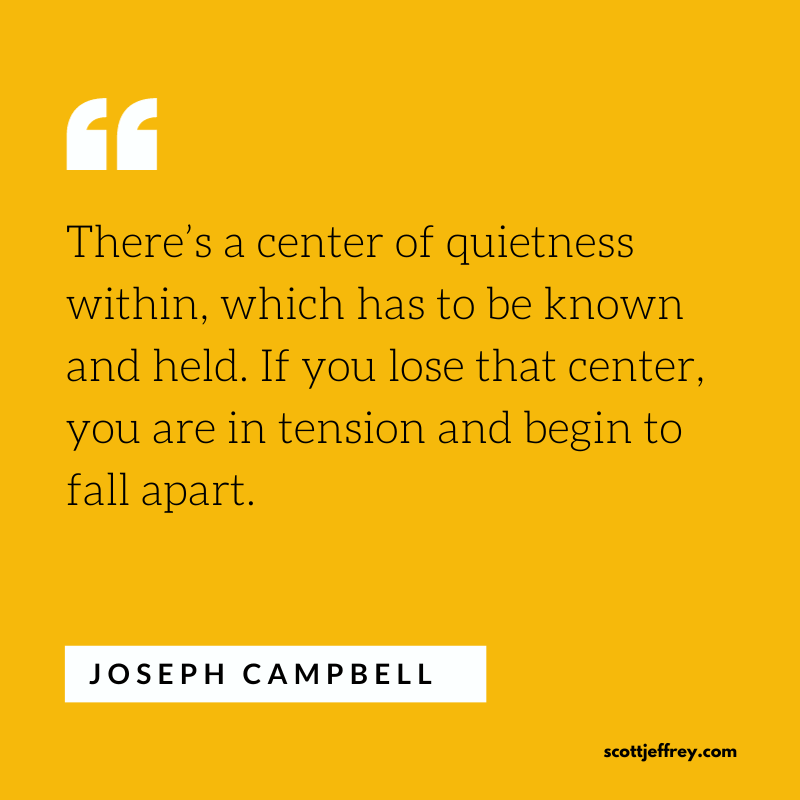
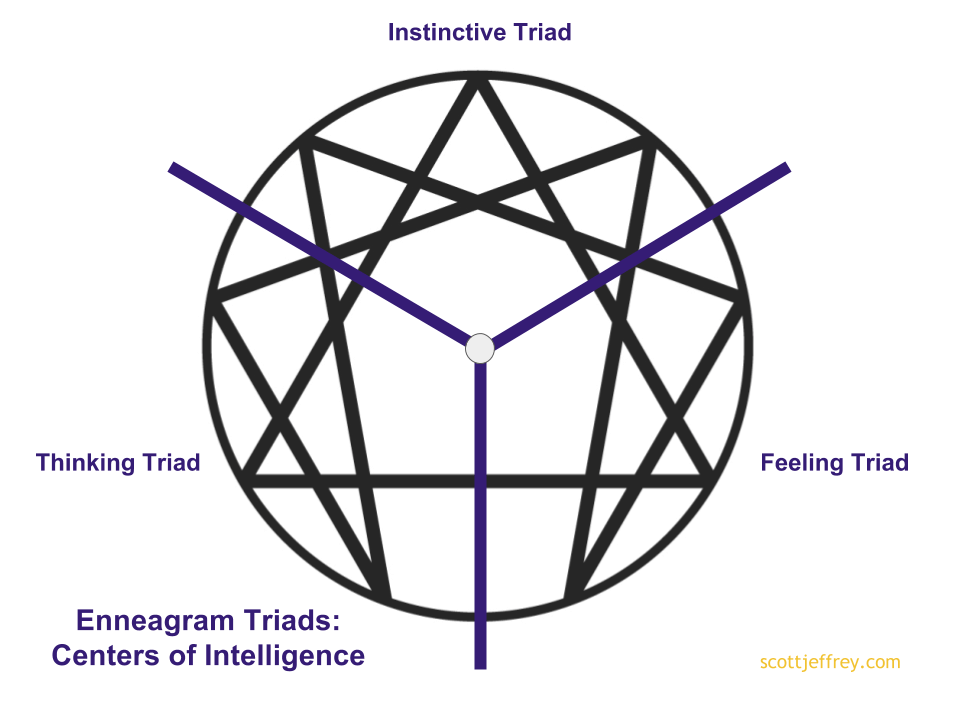

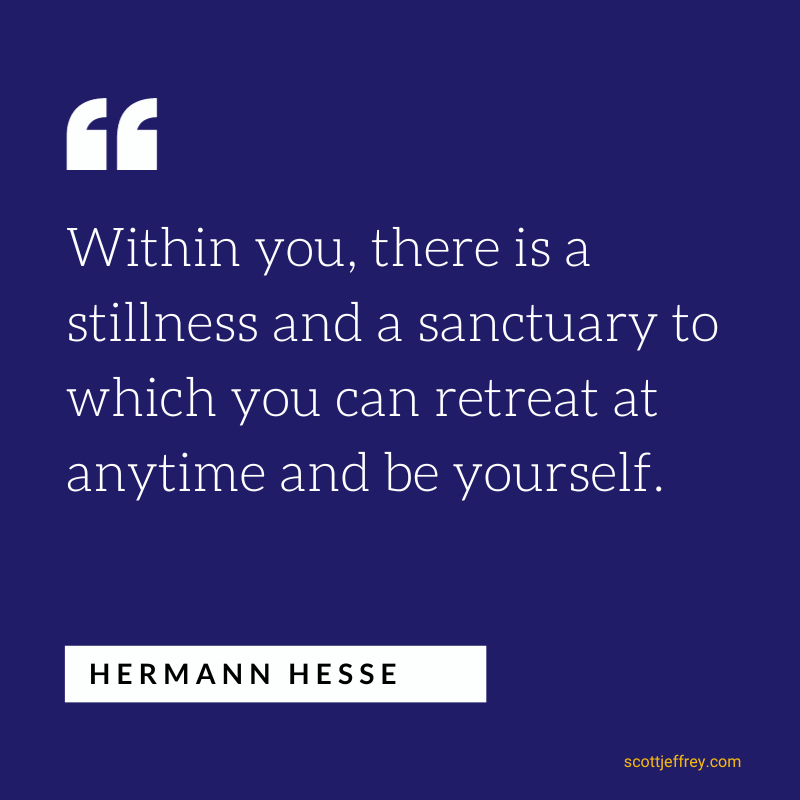
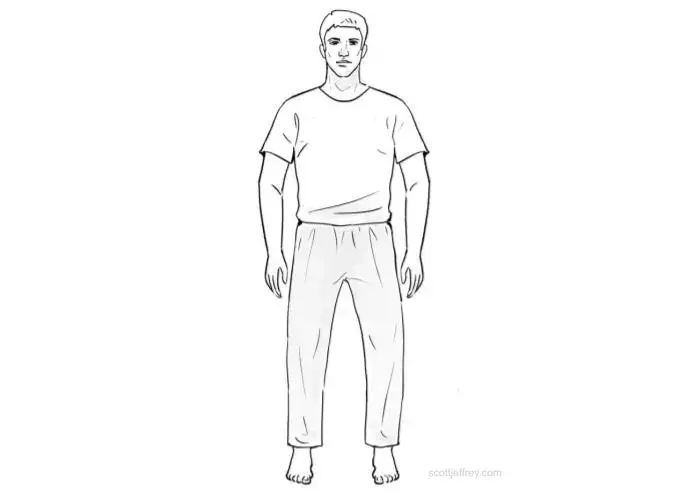
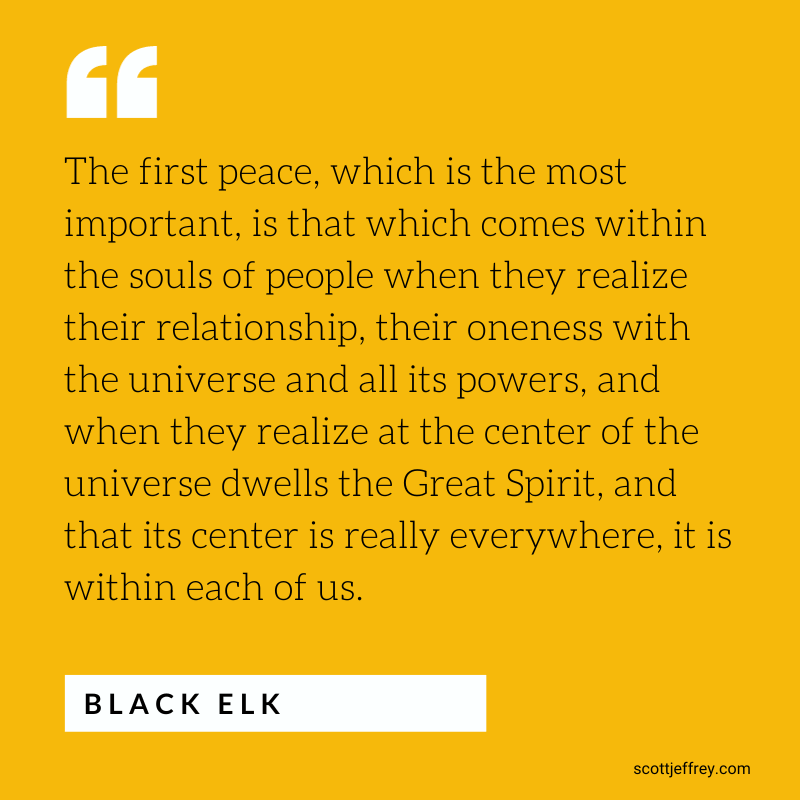
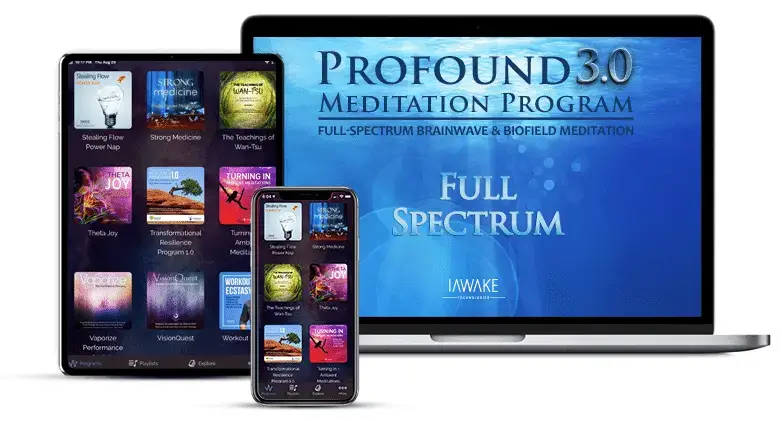
How to Center Yourself.
I like this article and want to learn more.
I have so many questions, do I really need these answered to be comfortable with learning? Or should I take a calming with acceptance approach, that will eventually find the answers I seek? Should I go ahead and ask…ok I will ask. In the four centers, take in information via the physical, interpret experience via the emotional, evaluate the world via the mental. Could all be take in information? Thank-you.
Can you clarify your question?
“Could all be take in information?”
Thank-you for responding. In understanding the four main methods we interpret. I will give simply answer; no. I need to give long version, the four methods are complicated, now there associated with different attachments. My suggestion could they all be associated with “Could all be take in information?” The same question would apply to associate the four with either “interpret experience”, “evaluate the world” or. I don’t think this would apply to the spiritual center. So, I ‘ll rephrase to three main methods.
I still don’t understand what you’re trying to say/ask.
“Could all be take in information” is not correct grammar or syntax.
Tks for the reply. It is not the grammar, if it’s correct or not (you would know that far more than I would). For me I’m wanting to understand in a simpler process, if it is possible, the phrases you use describe different parts. You say information in physical category, experience in the emotional and evaluate in the mental.
That is complicated when going to the center- instead of gripping mental, emotional and physical, I now have to grip what is experience in the emotional (emotional and experience being to separate functions), evaluate in the mental and information in the physical. Hope you can sort this for me. Thank-you. Reading back, it seems your descriptions are pathways to the physical, emotional and mental.
““Could all be take in information”
Read your statement out loud and then determine if it’s not missing something.
The Center is a felt experience. Get acquainted with the qualities of the Center (alertness, neutrality, calmness, active, relaxed, at-home) and then you become more conscious of when you’re in this space and when you’re not.
When you say;
“There’s a good chance you’re out of the Center right now (especially if you’re reading this on your phone).”
Are you referring to what you said about being centered throughout the day, so you wouldn’t need to read about how to be centered?
When you say;
“Depending on your personality type, you may find certain exercises work better for you than others.”
Are you referring to your dominate type, that is thinking, feeling or sensing? If that is, then can you match these type with the fifteen methods for me? Thank-you.
Basically, you wouldn’t be on phone, period. And you certainly wouldn’t use your phone to pretend that you’re acquiring knowledge.
Smartphones are slowly radiating billions of people, minute by minute, day by day.
Some people are called “energy sensitive” because they can feel the effects of EMF. But the reality, they are just the ones who aren’t desensitized to the constant, cancer-causing radiation.
If you look at how the average person lives, it’s a collection of learned behavior based on watching other people. When someone is in the Center, this is not the case.
“Are you referring to your dominate type, that is thinking, feeling or sensing?”
Yes, we each have weaknesses and strengths. As I mentioned in that other guide, it’s our weaknesses that keep us away from ourselves (in this context).
“If that is, then can you match these type with the fifteen methods for me?”
No. Just experiment and play around with the methods.
Am I right in assuming if we are too much on the intellectual mindset or emotional or physical or spiritual, we are out of center? Then we need to use these practices you’ve mentioned to get us in the center?
In the context of how these centers are described above, yes, to a degree. However, it’s not meant to suggest that you should actually try to balance these centers. That would drive you nuts and it would be an intellectual endeavor (not useful)
But from the standpoint of the Center as used in the ancient traditions, it’s not about balancing these four centers. In fact, the center doesn’t have any location at all. It’s more of a quality of consciousness that leads one back to the Self.